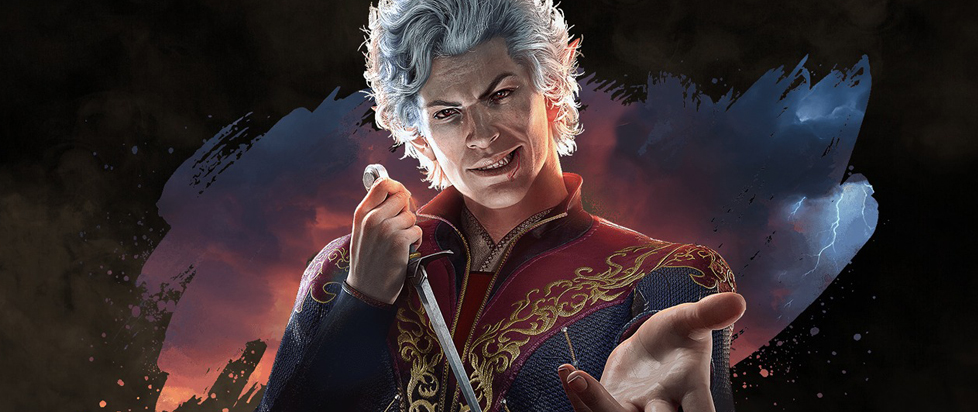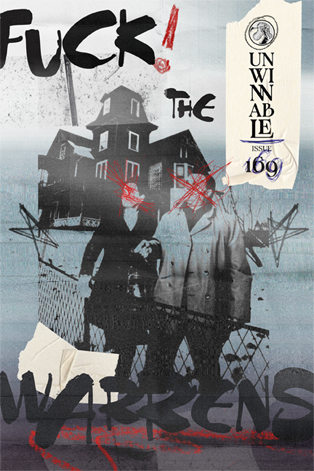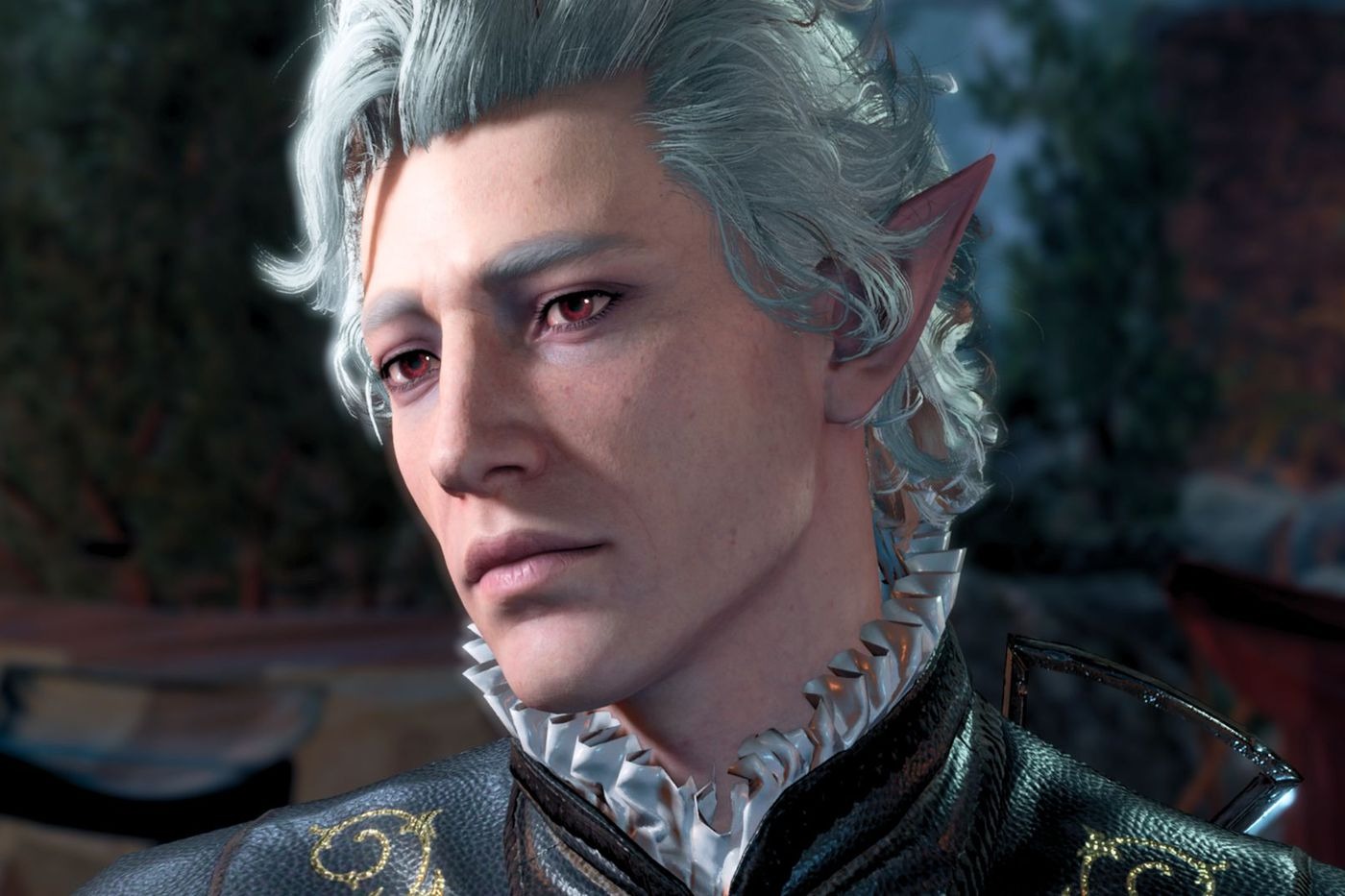
Personal Emergence

This column is a reprint from Unwinnable Monthly #169. If you like what you see, grab the magazine for less than ten dollars, or subscribe and get all future magazines for half price.
———
Analyzing the digital and analog feedback loop.
———
I think a lot about Astarion lately (it didn’t help matters that I just finished writing a piece on the tortured vamps of Soul Reaver for last month’s issue). I’m sure a lot of Baldur’s Gate 3 players fixate on the rakish Vampire/High Elf Rogue, whose voice actor I swear is paying homage to Tim Curry as Frank-N-Furter. There’s something irresistibly charming about how openly manipulative, self-serving, cruel and petty Astarion is and for my playing experience so far, he’s the life (err or would that be unlife?) of the party. Not to mention how poignant his intermittent moments of deep insecurity are, betraying his true feelings about being a former slave of 200 years to the Szarr family. I definitely feel an affinity towards this charismatic vamp in some regards, but often my desires as a player aren’t so much about possible romantic/sexual attraction as they are about friendship. Much to Astarion’s disappointment, which is often severe and punishing.
Yes, I’ve already decided that Astraea – my sheltered Forest Gnome Conjuration Wizard/Guild Artisan – who often engages with Astarion’s flirty banter, and who is beguiled by how different he is from her, is not going to be romancing the bad boy. I’ve decided that while the two have indeed a lot of chemistry, it’s not the sort that leads to them eventually becoming lovers. What I find most rewarding (at least in Act 1 so far of my first playthrough) is that there’s a level of naturalistic unpredictability to the dialogue between your protagonist and a mercurial fellow like Astarion. Such ambiguous interaction emphasizes how unlikely yet strangely believable their friendship is. And how that friendship grows and blossoms slowly over time. No matter how tenuous or cautionary that friendship arc might be.
Astarion and Astraea follow what has become an accidental tradition or pattern for me as a player of conversation- and relationship-heavy RPGs. I’m prone to having at least one character in the cast who follows an enemies-to-friends or at least begrudging allies arc with my protagonist (who are often based off characters from my fiction projects). In the past, for instance, I’ve had a Dragon Age 2 playthrough that had my smuggler-origin Hawke, Tora, run the gauntlet of reconciling and winning back Fenris’ trust after three quarters of my playthrough was spent with them being the bitterest of rivals. My Inquisitor started off as a spoiled Circle mage Trevelyan who traded barbs and misgivings with Solas, yet eventually became close enough with him that he viewed her as a respected mentee during her Rift Mage subclass training. I don’t know if my fascination with rivals to friends or allies arcs says anything about me, because as far as I can remember I haven’t had many instances of such relationships in my own life. I also don’t often play an extension of myself in RPGs where you can customize your character, though I have nothing against it.

Getting back to BG3, the vamp and the forest gnome clashed straight away, with Astraea’s initial alignment being a sort of wavering between neutral good and chaotic good. I don’t believe in static moral alignments – it’s a bone I’ve had to pick with D&D for quite some time, and I prefer to think of what dynamic mix of archetypes suits my character’s creation best. For Astraea, I envision her as Kaylee Frye from Firefly-meets-Princess Lily from Legend – she has a naive streak but she’s also highly intelligent, has a knack with gadgets and a penchant for emotional negotiation. She communes with animals and often supports actions that seem analogous to nature’s progress. Astarion is, well, you know how you meet him. In most instances, he manages to wrestle the protagonist to the ground after a cheap ruse and puts a blade to their throat. Not so with Astraea, whose perception check was high enough for her to remain in a wary standoff with him, unpinned. The two then proceeded to disagree on everything in camp conversations, from what to do with the Mindflayer’s tadpoles to what tack to take regarding sharing and caring for other party members.
I built an emergent narrative from the lead up conversations to the bite scene, where Astarion’s vampirism is officially revealed (though how anyone didn’t see it coming in the party is beyond me). Just prior to Astarion attempting to bite Astraea in her sleep, they had a fractious exchange about what manner of death the latter would choose if she was given a choice. Shocked and appalled, Astraea dug her heels in and refused to give the vamp an answer. He chastises her at first, but when he sees she won’t back down or give into his whims, Astarion ends the conversation by saying “Don’t worry – I like you, darling. I’ll make sure you get a special death” or something along those lines. So, you can imagine that when Astraea awoke to him trying to bite her. To put it mildly – she freaked out.
But then the weirdest thing happened. She still let him drink her blood in spite of threatening to defend herself and although she remained wary of him after that night, the two started to become friends. My take on this is, beyond my curiosity as a player to see another side of Astarion, is that Astraea realized that his vampiric burdens weren’t in and of themselves aberrations of nature. She also learned of his happiness to be free of his former life as a tormented vampire spawn and his revels in receiving a rare second chance at living like an unturned being made her develop a protective streak for him. They still had their differences, of course, but now the two seemed more like confidants. Astarion began to show a sort of affection for Astraea, especially as she began to lean more into her cunning side as a Forest Gnome and a scholar who was more willing to get her hands dirty than she first let on. But any attempts at flirting with her only end in his utter frustration, because Astraea is not only uninterested in him romantically, she’s often inquisitive about his past (though never forceful).

During the camp party scene with the Tieflings after choosing to save the Emerald Grove, Astraea finally struck upon Astarion’s last nerve and was insulted by him for her naivety. At first, I was shocked at how the rogue had reacted to her trying to keep up his sulky spirits, but the more that time has passed from that scene I realize I’m in fact delighted by that altercation. The two are still friends somehow by the way (Astraea’s even killed a vampire hunter to protect him), and I appreciate Larian for keeping realistic tensions in the relationships of this game. Although I do have a criticism of the relationship progression in that regard as well— a lot of the other characters I feel have been heavily engineered to fall for or lust for your protagonist. Especially Gale. Yes, hopeless romantics and unrequited love exist, but you can’t tell me that just from a few early encounters every other party member would suddenly have the hots for Astraea (and they did all express rather deep feelings for her during the party scene). Other than Astarion, the only character she’s openly flirted with is Halsin. But I digress.
When I play games like Baldur’s Gate 3 or any Dragon Age entry, games that emphasize building relationships through conversation, my favorite aspect of those relationships is how my personal canon for my character creates emergent stories of how exactly any character in the game connects with mine and whether it’s a deep connection or not. Most often I’ve found that I have more satisfying character relationships in games that allow for deep friendship or platonic arcs of some sort. That same smuggler-Hawke I mentioned earlier? She’s the platonic wife of Sebastian Vael and was happy to let him live his priestly life, having grown exhausted with all the toxic men she’d encountered during her years in the underground of Kirkwall. I loved that there was an option to have the focus of a relationship be about something other than strictly sexual or romantic attraction, although I head-canon that Tora and Sebastian love each other deeply.
A lot of games still haven’t quite struck the balance, in my opinion, of portraying nuanced relationship paths that don’t boil down to “courting-then sex-then-never-speaking-to-each-other-again”. That’s why, as much as I still find some typical romance paths fun, I often prefer deep platonic relationships in games. My choice to not romance Astarion isn’t because I want to be unique or don’t believe his romance path wouldn’t be worth it, it’s because in addition to it making a lot of narrative sense for my first protagonist, I crave more uncertainty in ludic relationships.
Games are often, especially at the AAA level, power or pleasure simulators. I want more RPGs to offer a middle road for players like me as well as for asexual or aromantic people who want more nuanced options. There’s nothing wrong with exploring sex and romance in games, but there’s so much more to attraction than just bonking or finding a romantic soulmate.
I feel like hearing of more players’ emergent narratives and head canons is a good start for this and perhaps a way that RPG developers could consult for future relationship narratives. Perhaps they are already doing so behind-the-scenes? The less relationships feel like formulas that can be easily captured by guide writers and wiki stats, the better.
———
Phoenix Simms is a writer and indie narrative designer from Atlantic Canada. You can lure her out of hibernation during the winter with rare McKillip novels, Japanese stationery goods, and ornate cupcakes.




